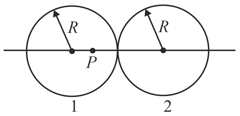An insulating spherical shell of uniform surface charge density is cut into two parts and placed at a distance apart as shown in figure. and denote the electric fields at and respectively. As (i.e., )
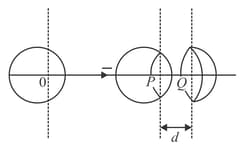


Important Questions on Electric Flux and Gauss's Law
The figure shows, in cross-section, two Gaussian spheres and two Gaussian cubes that are centered on a positively charged particle. Rank greatest first, and indicate whether the magnitudes are uniform or variable along each surface.
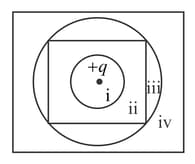
The figure shows four Gaussian surfaces consisting of identical cylindrical midsections but different end caps. The surfaces are in a uniform electric field that is directed parallel to the central axis of each cylindrical midsection. The end caps have these shapes: , convex hemispheres; , concave hemispheres; , cones; , flat disks. Rank the surfaces according to the net electric flux through them and the electric flux through the top end caps, the greatest first.
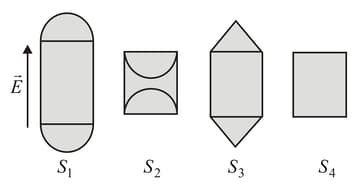
The figure shows a neutral metallic sphere with a point charge placed near its surface. Electrostatic equilibrium conditions exist on the metallic sphere. Mark the correct statements.
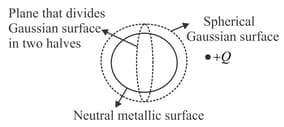
and are semi-spherical surfaces of radius and with and as the electric fields at their surfaces. Charge is placed as shown. What is the condition which may be satisfied?
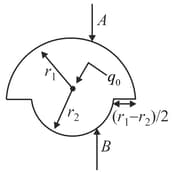
A non-uniform electric field goes through a cube of side length oriented as shown. Then,
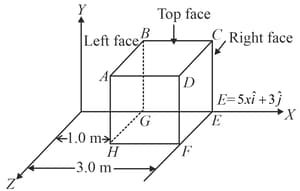
Two mutually perpendicular infinite wires along -axis and -axis carries charge densities, and . The electric line of force at is along the line where is also a point lying on the same line. Find .
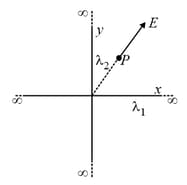
Figure shows, in cross-section, two solid spheres with uniformly distributed charge throughout their volumes. Each has radius . Point lies on a line connecting the centres of the spheres, at radial distance from the centre of sphere . If the net electric field at point is zero, and is and , what is the value of ?
